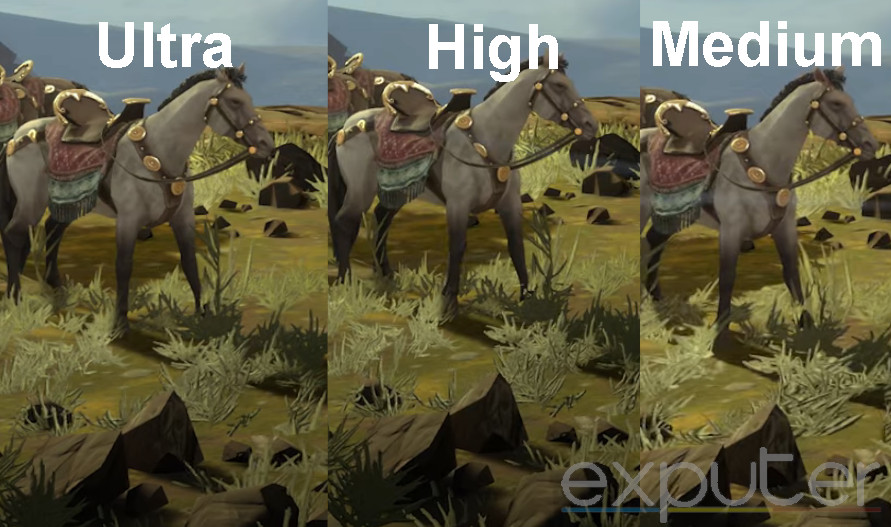Prince of Persia Lost Crown might not have those in-depth best settings options, but you can still make changes to achieve better FPS and performance.
Fortunately, Lost Crown is not a difficult game to run, as it was developed while keeping portable consoles in mind. However, some players on budget PCs might still struggle to achieve the performance or FPS they want.
This is why I have created this guide to optimize Prince of Persia Lost Crown as much as possible without sacrificing visual quality.
I’ve benchmarked Prince of Persia Lost Crown on a PC with the following specs:
- OS: Windows 11 Pro 23H2
- System: Lenovo Legion 7i Laptop
- CPU: Intel i7-11800H
- GPU: NVIDIA RTX 3070 8GB
- RAM: 32GB DDR4
- Storage: Samsung 1TB SSD Gen 4
You’ll at least need an AMD Ryzen 3 1200 or Intel i5-4460 CPU, AMD Radeon RX 5500 XT or NVIDIA GTX 950 GPU and 8 GB RAM to run POP Lost Crown on your PC.
These two settings are what impact your graphics and in-game FPS:
- Graphics Quality
- Antialiasing
Prince of Persia Lost Crown isn’t really a demanding game on PC, so you wont be having any issues while running the game. I did encounter FPS drops and crashing issues with the game at random intervals which isn’t great.
Prince Of Persia Lost Crown Best Display Settings
Here is a summarized version of the best settings in Prince of Persia: The Lost Crown. You can also find a more detailed explanation for each setting by reading further below.

Best Settings Summarized
| Display Mode | Fullscreen Window |
| Resolution | Highest Available |
| Vsync | Off |
| FPS Limit | Max |
| Graphics Quality | High – Ultra |
| Antialiasing | SMAA |
| Subtitles | Your Choice |
| Subtitles Background | None |
| Use Alternative Font | Personal Preference |
| Calibration | 1.0 |
| Text Language | Your Preference |
Display Mode: Fullscreen Window
Having your Display Mode as fullscreen will allow you to minimize the input delay. This is especially important for platformers that require precise timing and inputs. Fullscreen mode will also optimize your performance because it will pause the game once you tab out, unlike Windowed mode.
Resolution: Highest Available
For the resolution, you must select the native resolution that your monitor supports, which will be the highest option. Additionally, this setting will present a refresh rate option that you must also match with your monitor. In rare cases where you have a 2K or 4K monitor but your PC can’t handle the resolution, you can tone it down to 1080p instead. Use the same logic for the refresh rate.
Vsync: Off
Vsync matches the frame rate of your GPU with your monitor’s refresh to eliminate screen tearing. Screen tearing occurs when disoriented lines appear on your display. Unless you experience this, I always recommend every player to keep Vsync disabled. This is because Vsync adds an unnecessary amount of input delay and can put more of a burden on your PC.
FPS Limit: Max
This setting will limit the FPS to the number you set it to. There’s no need to limit your FPS. So, keep this setting at max.
- Note: There are some rare cases where players with strong PCs get over 400 FPS in Prince of Persia: The Lost Crown. This is overkill and puts unnecessary stress on your PC. Only for this case, I recommend limiting the FPS to your monitor’s refresh rate.
Graphics Quality: High – Ultra
This is the main graphics control for the entire game. Because Prince of Persia Lost Crown is not a very demanding game, my recommendation is to keep it around high or ultra. Going anywhere below this can significantly impact the experience. However, if your PC is unable to handle high or ultra graphics settings, you will have no choice but to bump it down to medium.
Here’s a comparison of what you can expect the graphics to look like in different settings:

Antialiasing: SMAA
Antialiasing refers to how smooth the edges look on objects. This setting offers you three options: Disabled, FXAA, and SMAA. If you keep it disabled, the edges of objects will not look smooth. SMAA will offer you the best smoothness, while FXAA will slightly smooth out the edges but consume less processing power.
I suggest that you keep this setting at SMAA. In my experience, switching between FXAA and SMAA didn’t have much of an impact on the performance or the FPS.

Subtitles: Your Choice
This setting will either enable or disable the subtitles displayed inside Prince of Persia Lost Crown. This is totally up to your personal preference because subtitles will not affect the performance of the game.
Subtitles Background: Personal Preference
Same as before, this setting will not affect your game’s performance. If you want your subtitles to have a background, leave it on. Otherwise, turn it off.
User Alternative Font: Personal Preference
This setting will change the font of the text that you see. This will also not affect your FPS. This is why you can choose whichever font you prefer.
Calibration: 1.0
You can change the brightness of your game using this setting. I prefer it at the default number, which is 1. However, you can play around with it to see which one looks better for you.
Text Language: Your Choice
Prince of Persia Lost Crown features several text languages that you can pick from. I suggest picking whichever you feel comfortable with. You will not affect your performance by tweaking this setting.
Some Bonus Windows Optimization Tips
If you would like to further optimize your graphic settings, you must make changes outside of the game as well. These Windows 10 settings will help you maximize the performance of your PC while minimizing the load on it, which will improve your in-game performance and FPS.
- Enable The Ultimate Performance Power Plan
- Turn On Game Mode
- Get Rid Of In-Game Overlays
- Terminate Useless Background Applications
My Verdict
That completes it. The best settings for optimizing Prince of Persia Lost Crown’s FPS and performance. Unfortunately, the game does not give you too much freedom to tweak around intricate graphic settings. However, I believe that’s not necessarily a bad thing because Lost Crown is a simple platformer that isn’t too heavy on your PC.
You don’t even need a cutting-edge GPU to push Lost Crown to 4K. Most low to mid-end PCs will be able to comfortably run this game regardless.
GTX 1060, a 7 year old entry level GPU, is good for 4k60 Ultra Settings in the new Prince of Persia. Wow. pic.twitter.com/JnMCOAhxxy
— James Galizio (@Theswweet) January 4, 2024
Even the Nintendo Switch can run Prince of Persia Lost Crown on 60 FPS.
When you hear that Sargon will jump at 60 FPS on the Switch.#PrinceofPersia pic.twitter.com/xCKKj1jEhS
— Prince of Persia™ (@princeofpersia) July 1, 2023
Still, there will always be players who struggle to achieve the performance they want. Whether it’s getting over 120 FPS or achieving a stable 60, you can choose to squeeze out every bit of optimization possible by following my guide.
Next:
- Prince Of Persia The Lost Crown Crashing
- Best Nvidia Control Panel Settings
- Best AMD Settings
Thanks! Do share your feedback with us. ⚡
How can we make this post better? Your help would be appreciated. ✍
Man finally I can enjoy the game without any FPS drops.



